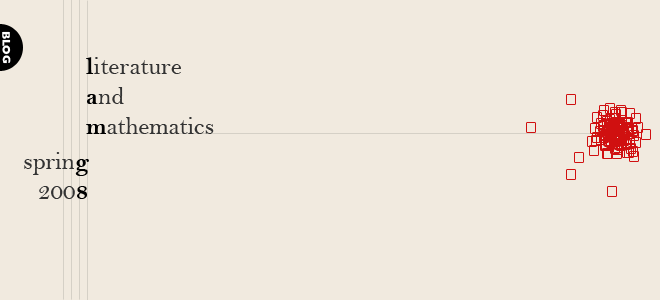So, my title really has nothing to do with this boring post. However, it is an example of an actress (not scientist) with some odd tendencies...
I am going to treat this blog as a brainstorm for 3.1. It seems as though many groups are interested in discussing the theme of how mathematicians are depicted in books and movies, so in an effort to make our topic more specific, one idea (as discussed in class) is to focus on the techniques used to create the stereotypes.
Movies affect us far differently than books. In Pi, lighting and sound are used to emphasize Max's unstable mental condition and the physical symptoms associated with it. For example, when he is about to have one of his episodes, the music speeds up and the lighting becomes more overexposed. This makes the viewers also uncomfortable; making them experience Max's pain far differently than a book could describe it. Also, Aronofsky's choice to film in black and white (I read this was more expensive than color) was more "black or white." The scenes are either dark or extremely bright.
In the The Proof (The Nova Documentary), scenes are shot of Andrew Wiles taking walks on a wooded trail, laughing, crying, studying in his office, interacting with colleagues and family, etc. The lighting is not manipulated, and the viewers get to know his daily behaviors as well as his eccentricities. While the fact remains that he spent 7 years working in his attic, it becomes less weird as the documentary describes that his passion for the problem began at an early age.
In We, Zamyatin both exaggerates the logical nature of D-503's brain as well as describes his daily routines, sex life, and attraction toe I-330. However, D-503 never cracks a jokes, and I don't recall him laughing aside from when he almost kills U, so there is an obvious stress put on certain personality traits.

No comments:
Post a Comment